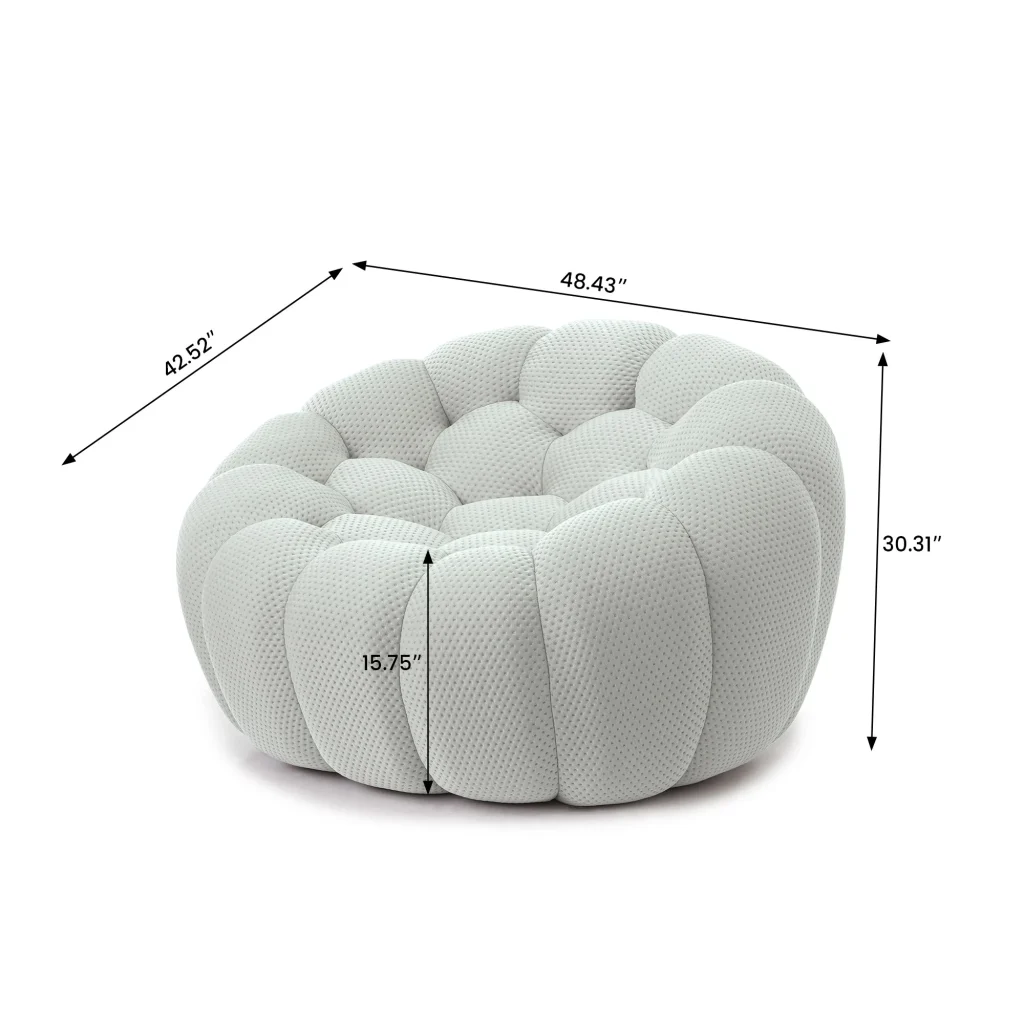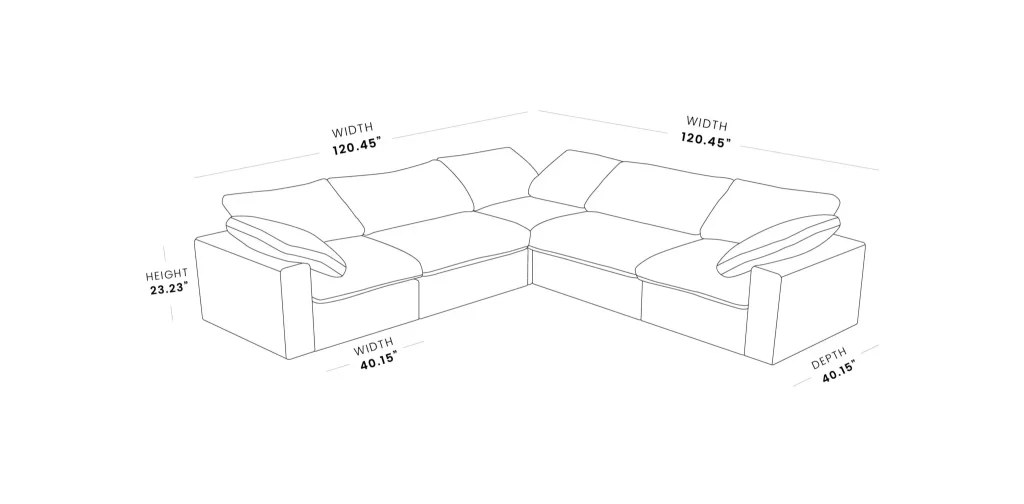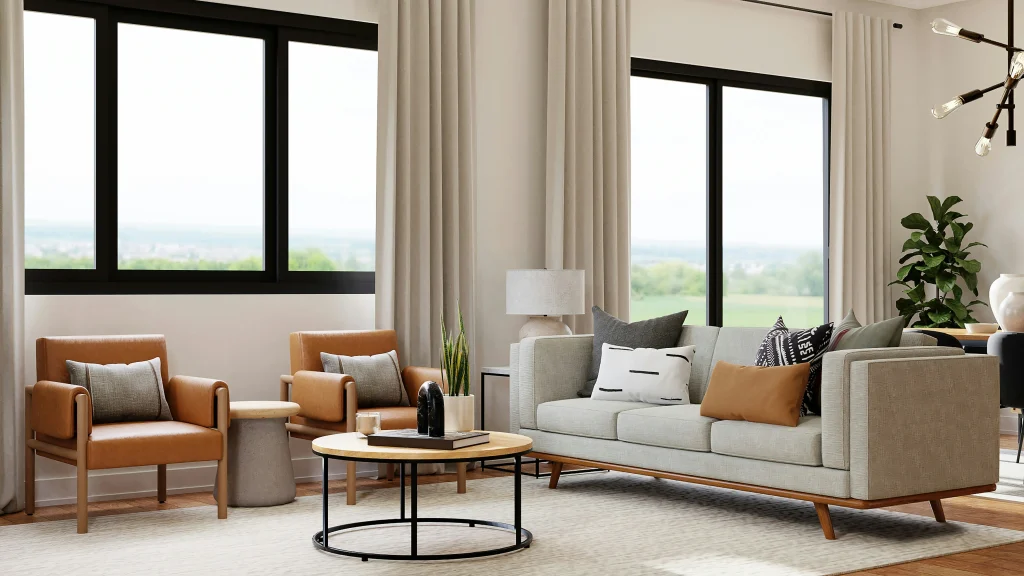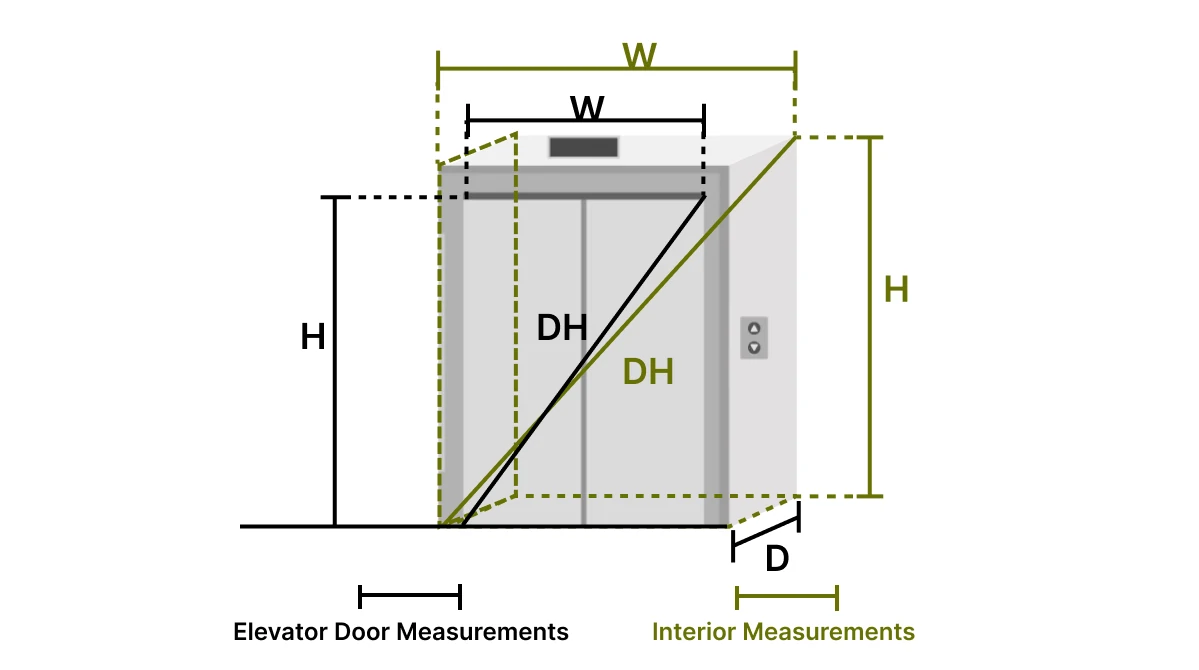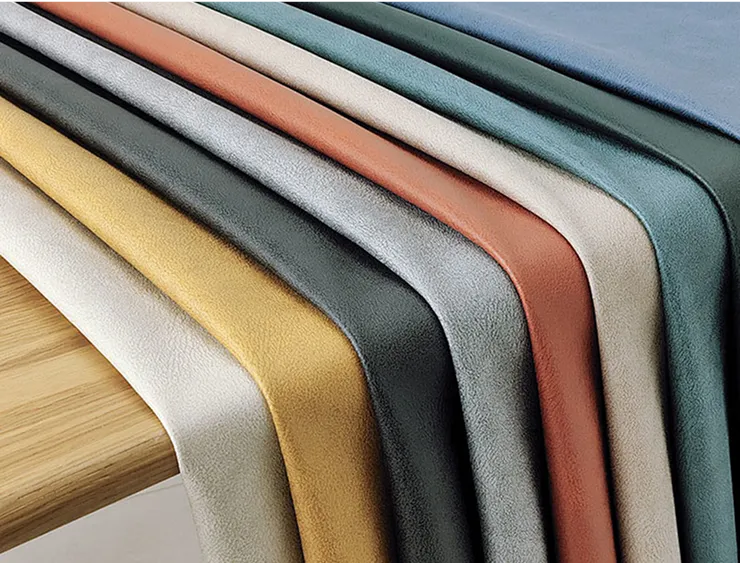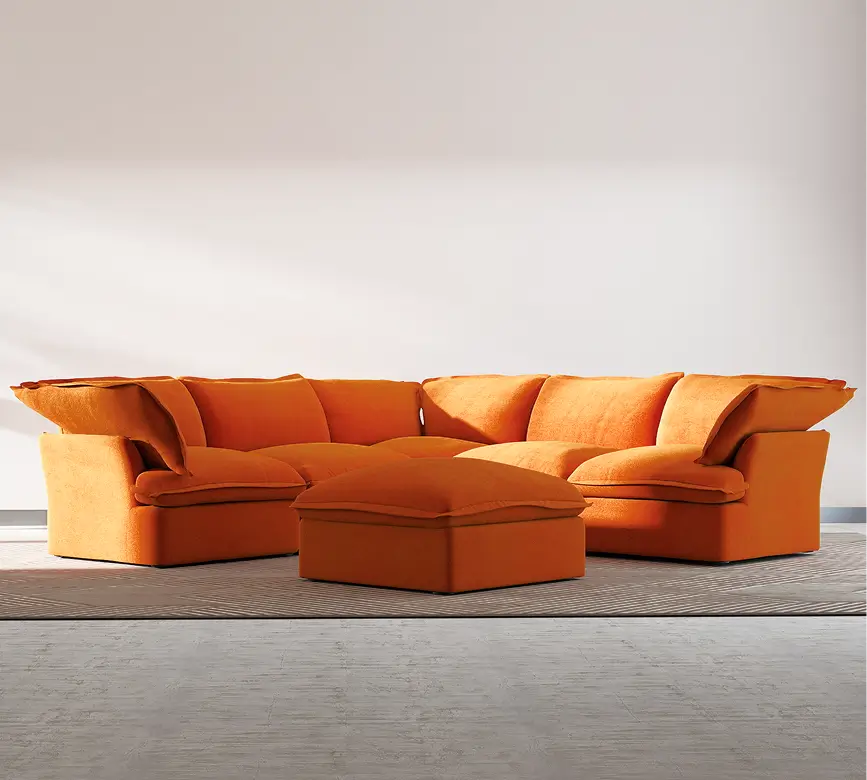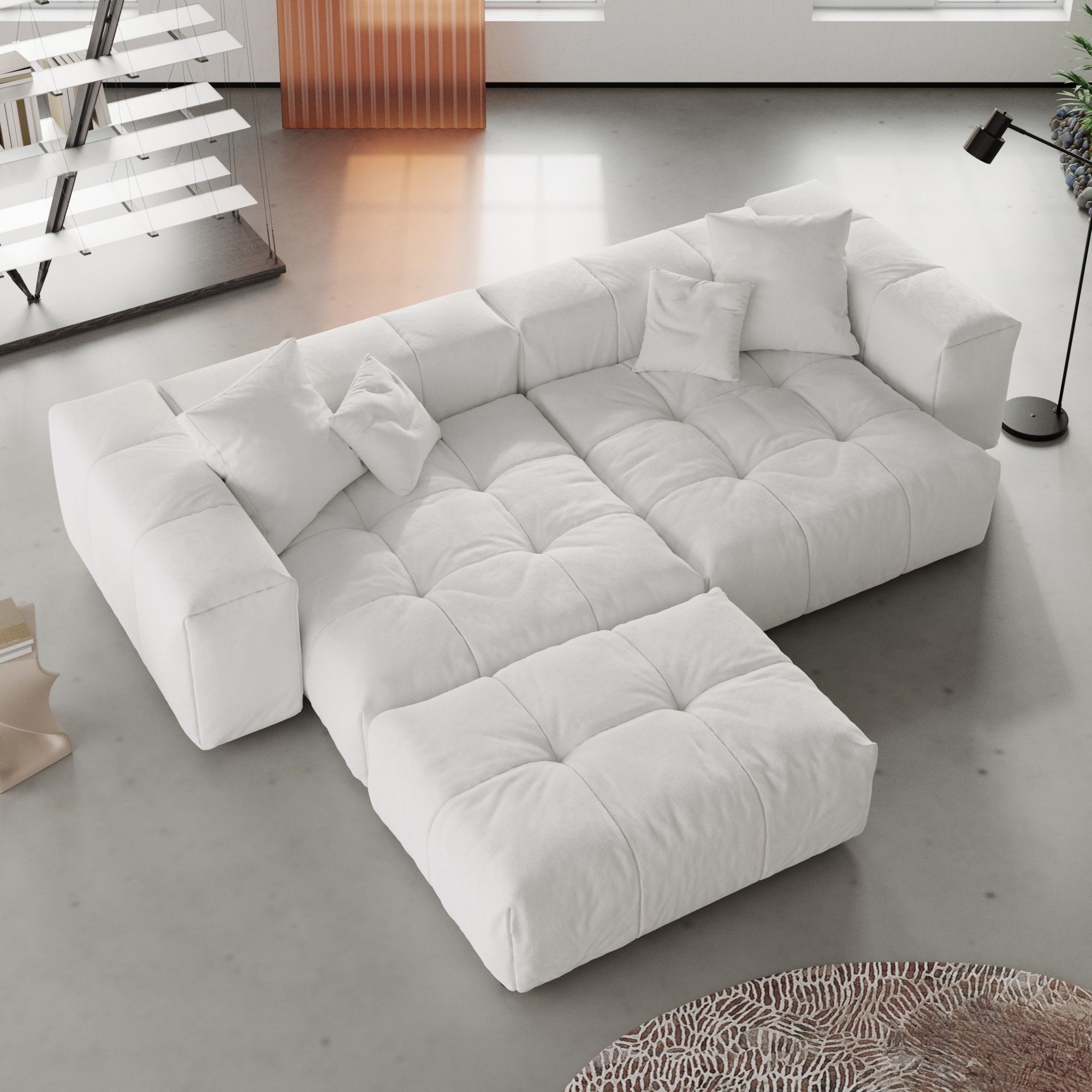Have you ever wondered why the size of your sofa feels like it changes the whole mood of your living room? A sofa that is too small can leave the space looking empty, while one that is too large can make the room feel crowded. That is why choosing the right size matters not only for comfort but also for style. sectional sofas add even more flexibility since they can be arranged to suit both small apartments and spacious living rooms. In this guide, you will learn how to find the perfect fit for your home.
How to Choose the Right Size Sectional Sofa for Your Living Room

Why Pick a Sectional Over a Traditional Sofa?
Sectional sofas have a way of transforming a room—both visually and functionally. If you’re debating between a sectional and a standard sofa, here’s why the sectional often comes out on top:
Makes the Most of Your Space: Sectionals are designed to hug corners and line up neatly against walls, making them perfect for small apartments or oddly-shaped living rooms that need a smarter use of every inch.
Flexible Seating Options: Unlike traditional sofas, sectionals can be reconfigured. You can stretch out for movie night, cluster everyone together for a game, or even split the pieces up when you need to change things up for a big gathering.
Room for Everyone: Sectionals are champions of comfy seating, providing plenty of room for family, pets, or guests. Whether you need an impromptu guest bed or a place for a lazy Sunday, these sofas offer up generous real estate.
Style With Choice: Sectionals come in countless shapes, fabrics, and colors. Whether your living room vibe is Scandinavian minimalism, urban chic, or laid-back classic, there’s a sectional to match.
Extra Features: Many sectionals go beyond ordinary seating by including perks like built-in storage, recliners, or even sleeper sections—giving you more than just a place to sit.
Ultimately, sectionals offer both versatility and comfort, helping you maximize your room’s potential while dialing up the cozy factor.
Step 1 – Measure Your Living Room Space
Take Accurate Dimensions
Start with a tape measure and record the length of your walls, the width of the room, and the total floor area. Do not forget to include the placement of windows, doors, and walkways, since these can affect how much usable space you actually have for your sofa.
Consider Room Shape
Think about the overall shape of your living room. A square room may allow for more balanced arrangements, while a rectangular room often works better with longer sofa modules. In open-plan homes, the sofa can help define a zone, while in a separate living room, it needs to fit within fixed boundaries.
Apply Space Rules
- Leave at least 75–90 cm of walking space around the sofa.
- Keep at least 45 cm between the sofa and a coffee table.
- In small rooms, the sofa should take up no more than 2/3 of the wall length.
- For open-plan layouts, use the sofa to define zones without blocking traffic flow.
Step 2 – Decide on Sofa Functionality
How Many People Will Use It?
Think first about the number of people who will regularly sit on the sofa. If you live alone or with one partner, a 2 to 3 seat sectional setup may be enough. For a small family of four, a 4 to 5 seat arrangement provides comfort without crowding the room. If you often have guests or a large household, consider a 6 seat or more sectional design, which can be expanded to fit everyone.
Primary Use
Next, consider how you will use the sofa most often. For daily use and family lounging, a classic L-shape works well. If your evenings are filled with movie nights, a chaise or recliner module adds extra comfort. For those who love to read, a smaller sectional with armrests and deep cushions can create a cozy nook. And if you often entertain friends, a U-shaped sectional sofa gives everyone space to relax and chat together.
Match Sectional Style to Your Décor
Choosing the right sectional goes beyond size and shape—it’s also about making sure your sofa feels like it belongs with the rest of your space. Start by looking at the overall vibe of your room. Do you have a modern, minimalist setup with clean lines and neutral tones? A low-profile sectional with slim legs and solid, muted upholstery will blend right in. If your look leans more traditional or cozy farmhouse, oversized cushions and textured fabrics like velvet or linen add warmth and character.
Take note of your existing color palette. You don’t need a perfect match, but the sofa should either complement the dominant colors or provide a subtle, stylish contrast. For example, in a light and airy room, a deep navy or forest green sectional can anchor the space without overpowering it. Patterns—think houndstooth, boucle, or even subtle pinstripes—can add interest when other pieces are more understated.
Don’t forget about materials. A leather sectional, like those from brands such as Atunus Home, exudes timeless elegance and is easy to maintain if you have pets or kids. On the other hand, soft chenille or boucle fabrics create a relaxed, inviting atmosphere perfect for family lounging.
Finally, make sure the sectional’s shape works with your room’s layout and flow. A streamlined L-shape may suit a contemporary loft, while a classic curved design might soften a squarer, more formal living room. Take a step back, and if everything feels balanced and cohesive—down to the rug, coffee table, and art on the walls—you know you’ve found a sectional that truly fits your style.
Step 3 – Choose the Right Sectional Configuration
Compact Options for Small Spaces
For smaller living rooms or apartments, choose two- or three-seat modules that fit the space without making it feel crowded. Placing them in a corner can save floor space and create a cozy seating area. Compact modules are also easier to move around if you want to change the layout later.
Larger Setups for Spacious Rooms
If you have a bigger living room, consider U-shaped or L-shaped sectional sofas. These arrangements offer plenty of seating and help define the living area. Adding chaise lounges or ottomans gives extra comfort and flexibility. Guests can stretch out, and you can create different conversation zones while keeping the space inviting.
Step 4 – Balance Comfort and Proportions
Seat Depth and Cushion Size
In larger rooms, deeper seats give more comfort and allow people to lounge or stretch out. They create a relaxed feel that matches the spacious environment. In smaller rooms, slimmer seats work better because they save space and keep the room from feeling crowded. Choosing the right cushion size also helps maintain comfort without overwhelming the space.
Scale with Other Furniture
A sectional sofa should fit well with the rest of your furniture. Make sure there is enough space for coffee tables, rugs, and shelving so the room feels balanced. Oversized sofas next to small tables can look awkward, while tiny sofas in large spaces may feel lost. Keeping everything in proportion makes your living room look inviting and well-organized.
Step 5 – Allow for Flow and Movement
When arranging a sectional sofa, it’s important to keep the room easy to move around in. Make sure walkways are clear and avoid blocking doors or windows. This helps everyone feel comfortable and keeps the space functional. As a general rule, try to leave at least 2 to 3 feet of clearance around the sofa. This gives enough room for people to walk, carry drinks or snacks, and move furniture if needed. Good flow makes your living room feel open, welcoming, and easy to use every day.
Step 6 – Test Before You Buy
Before committing to a sectional sofa, it helps to visualize the size in your room. You can use masking tape on the floor to mark the sofa’s footprint. This simple trick shows how much space it will take and how it fits with other furniture. If possible, try out sectional configurations in-store to see how the pieces feel together. Many online retailers also offer virtual room planning tools so you can experiment with layouts from home. Testing first helps you avoid buying a sofa that feels too big, too small, or awkwardly placed.
Step 7–Material and Fabric Options for Sectionals
When it comes to selecting the perfect sectional sofa, the choice of material can shape the overall look, feel, and longevity of your investment. Each fabric brings its own advantages—along with a few trade-offs. Here’s a quick guide to help you make a smart pick for your lifestyle and taste.
Fabric Upholstery
Fabric sectionals are popular for good reason. Natural materials like cotton and linen are soft and breathable but may require extra care if you worry about spills or stains. On the other hand, polyester and synthetic blends tend to be more resistant to fading and are easier to keep clean—perfect if you expect your sofa to face high-traffic use. With dozens of colors and patterns available, fabric sets the stage for custom style.
Leather
Leather sectionals instantly add a refined, upscale feel to any living space. Beyond looks, quality leather is sturdy and ages gracefully, developing a unique patina over time. Cleaning up after spills is generally straightforward, though regular conditioning is needed to prevent cracks or fading. If you have pets with claws, consider whether scratches will bother you down the line.
Microfiber
If you want a combination of softness and practicality, microfiber is a standout choice. Its dense weave resists stains and repels dust, making it ideal for households with children or pets. Microfiber is also easy to maintain and holds up well to daily wear and tear, all while offering a cozy, plush texture.
Velvet
For those looking to make a design statement, velvet brings luxurious texture and vibrant color to a room. While it feels soft and elevates the comfort factor, velvet can show marks or require a little more upkeep to keep it looking its best. A good fit if you’re aiming for elegance and don’t mind a bit of extra care.
Feeling overwhelmed? When deciding, consider not only the appearance but also how much maintenance you're willing to manage and how your household uses the space. A little research now ensures your new sectional remains a comfortable—and stylish—centerpiece for years to come.
Step 8 – Focus on Durability and Easy Care
Sturdy Frame Construction
When investing in a sectional sofa, it’s wise to look for a solid frame as your foundation. Hardwoods such as kiln-dried oak, beech, or maple tend to stand the test of time, holding up beautifully to daily use. Metal-reinforced frames can also add strength, especially in larger sectionals. Avoid particleboard or softwoods, as they’re more prone to creaking and warping over time.
Simple Maintenance
If your household includes pets, kids, or frequent movie snacks, opt for upholstery that’s designed for real life. Fabrics with built-in stain resistance (think Atunushome or treated polyester) are a game-changer and make quick work of spills. Leather can also be a durable choice, as it wipes clean and develops character as it ages. Zip-off cushion covers offer extra peace of mind, letting you toss them in the wash whenever needed.
Choosing the right materials ensures your sectional maintains its comfort, looks, and function year after year—making it a smart addition to any busy home.
Common Mistakes to Avoid
One common mistake is choosing a sofa that is too big for the room. Even if it looks great in a showroom, a large sofa can make your living space feel cramped and limit movement. Another pitfall is forgetting about delivery and assembly space. Make sure there is enough clearance in doorways, hallways, and staircases so the sofa can be moved in without hassle. Finally, many people ignore future lifestyle changes. Think ahead. Will your family grow, will you host more guests, or will your space be repurposed? Picking a sectional sofa that can adapt to changes helps you avoid the stress of replacing it too soon.
Keep It Low-Maintenance
If you want a sectional sofa that stays looking good with minimal fuss, start by picking materials that are easy to clean. Look for upholstery labeled as stain-resistant or performance fabric—these are built to handle spills and everyday wear. Leather is another smart option; it wipes down quickly and stands up well to kids, pets, and movie snacks alike.
For even more convenience, consider sofas with removable, machine-washable covers. Spot cleaning is much less stressful when all it takes is a quick toss in the wash. Regular vacuuming or a lint roller helps keep dust, crumbs, and pet hair under control. Don’t forget to check the care instructions before buying, so you know exactly what you’re signing up for—some fabrics require gentle cleaning, while others can handle a bit of scrubbing. Choosing well means less time worrying about messes and more time relaxing.
When to Get Professional Advice
Sometimes, choosing the right sectional sofa can feel overwhelming—especially if you’re dealing with challenging room layouts, open floor plans, or unique sizing needs. If you’re unsure about measurements, configurations, or how the sofa will fit with your existing décor, it’s a good idea to reach out to a furniture expert or interior designer. Professionals can help you visualize the options and suggest layouts that suit your lifestyle, whether you’re rearranging a small city apartment or furnishing a sprawling family room. They can also offer tips on making the most of every inch, ensuring your sectional fits beautifully and functions the way you need it to. This step is especially helpful if you want your space to feel cohesive, comfortable, and perfectly tailored to your needs.
Conclusion
Choosing the right size sectional sofa starts with measuring your space, thinking about how it will be used, picking the best layout, and balancing comfort with proportions. A well-chosen sofa makes your living room feel inviting, functional, and stylish. Remember, sectional sofas are flexible, so you can adjust them as your needs or lifestyle change. By planning carefully and considering both space and function, you can create a living area that works perfectly for everyday life and special gatherings.

